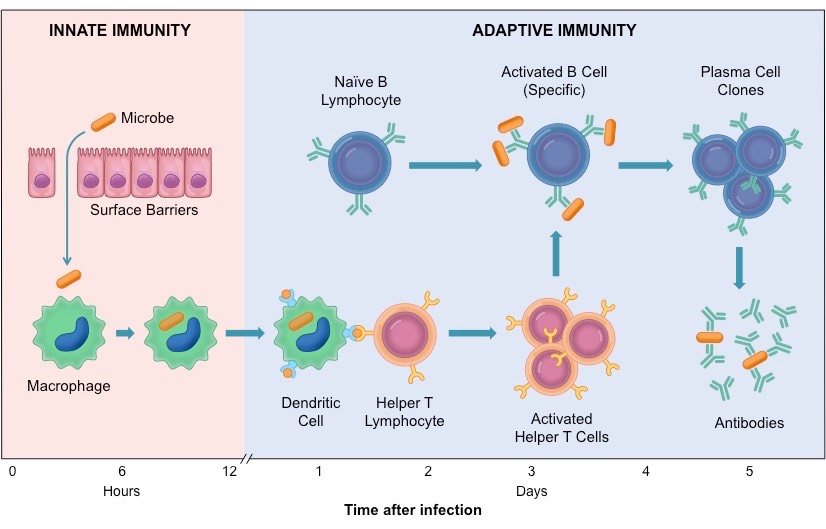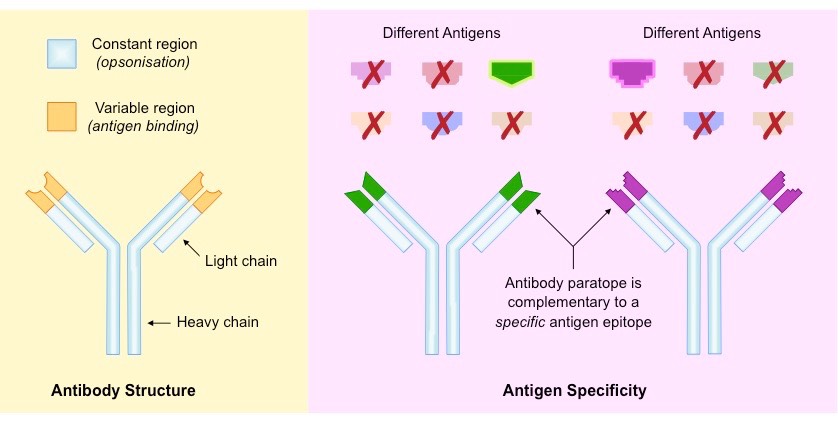![]()
Understanding:
• Production of antibodies by lymphocytes in response to particular pathogens gives specific immunity
The third line of defence against infectious disease is the adaptive immune system, which is specific in its response
- It can differentiate between particular pathogens and target a response that is specific to a given pathogen
- It can respond rapidly upon re-exposure to a specific pathogen, preventing symptoms from developing (immunological memory)
Lymphocytes
The adaptive immune system is coordinated by lymphocytes (a class of leukocyte) and results in the production of antibodies
- B lymphocytes (B cells) are antibody-producing cells that recognise and target a particular pathogen fragment (antigen)
- Helper T lymphocytes (TH cells) are regulator cells that release chemicals (cytokines) to activate specific B lymphocytes
When phagocytic leukocytes engulf a pathogen, some will present the digested fragments (antigens) on their surface
- These antigen-presenting cells (dendritic cells) migrate to the lymph nodes and activate specific helper T lymphocytes
- The helper T cells then release cytokines to activate the particular B cell capable of producing antibodies specific to the antigen
- The activated B cell will divide and differentiate to form short-lived plasma cells that produce high amounts of specific antibody
- Antibodies will target their specific antigen, enhancing the capacity of the immune system to recognise and destroy the pathogen
- A small proportion of activated B cell (and activated TH cell) will develop into memory cells to provide long-lasting immunity
Activation of the Adaptive Immune System

Antibodies
Antigen: An antigen is a substance that the body recognises as foreign and that will elicit an immune response
Antibody: An antibody is a protein produced by B lymphocytes (and plasma cells) that is specific to a given antigen
- Antibodies are made of 4 polypeptide chains that are joined together by disulphide bonds to form Y-shaped molecules
- The ends of the arms are where the antigen binds – these areas are called the variable regions and differ between antibodies
- The rest of the molecule is constant across all antibodies and serves as a recognition site for the immune system (opsonisation)
- Each type of antibody recognises a unique antigen, making antigen-antibody interactions specific (like enzymes and substrates)
Antigen-Antibody Specificity

